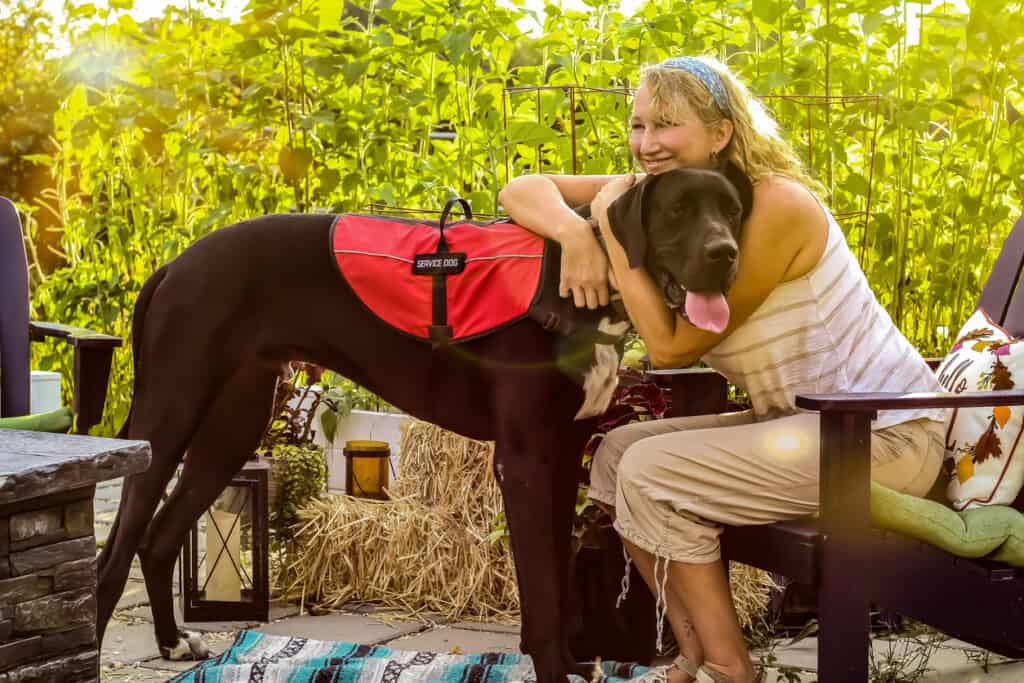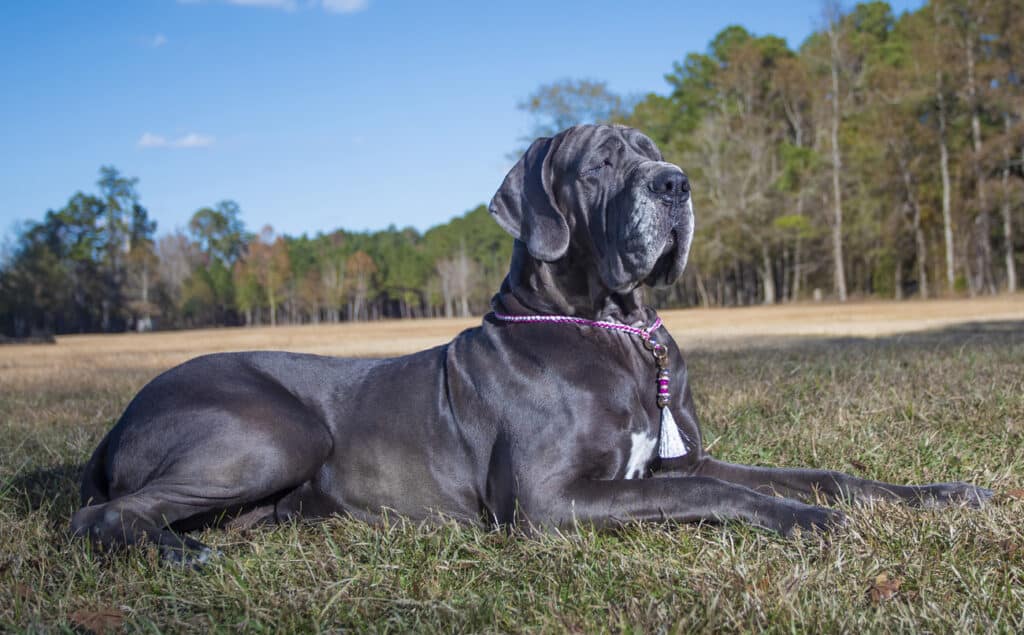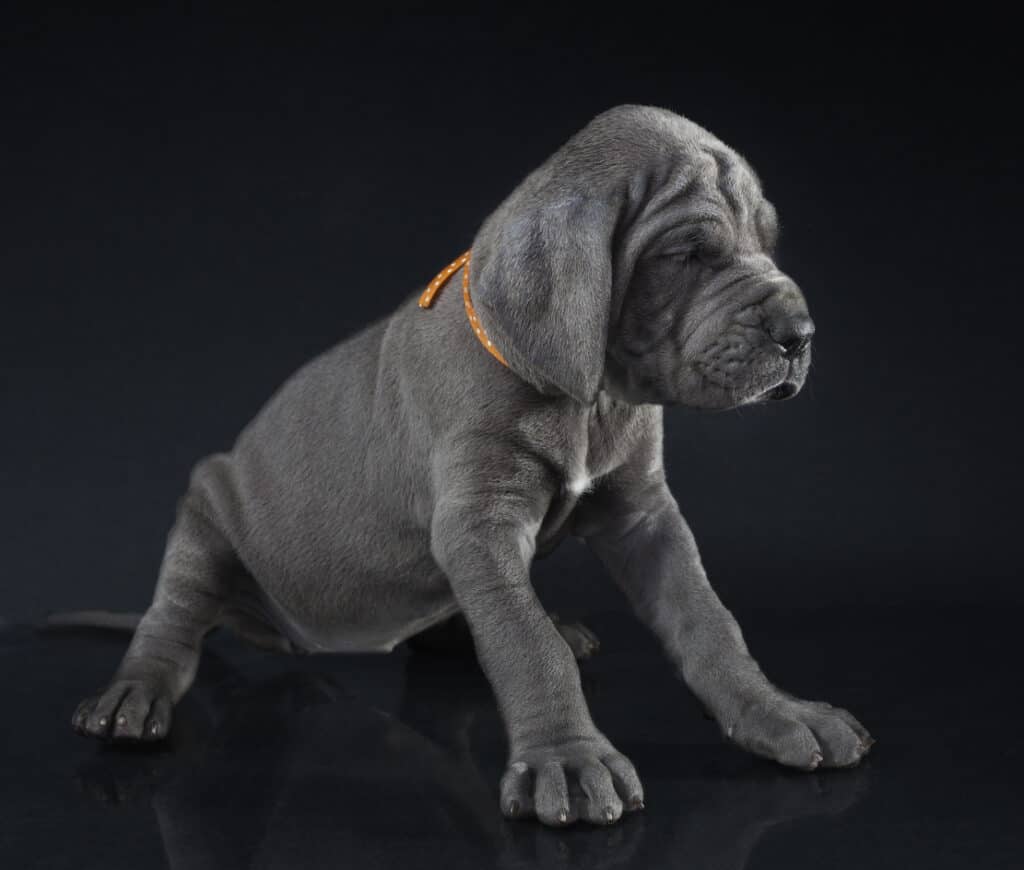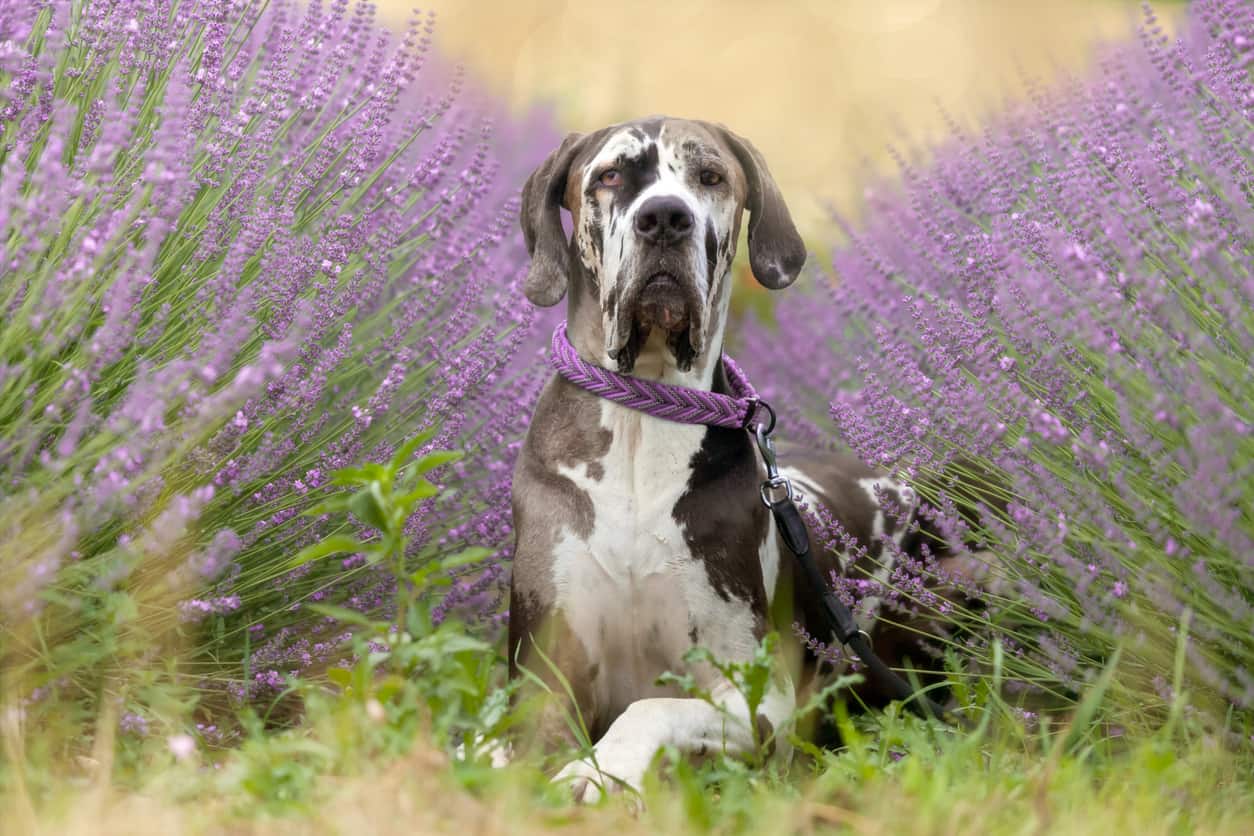If you own a Great Dane, you probably know that they’re one of the most loving and docile breeds around. You also probably know that this majestic breed unfortunately doesn’t live for very long – just seven to ten years on average. While it can be hard to know that our Great Danes will only be with us for a relatively short time, it can help to be aware of all the potential health issues that this breed may encounter. By educating yourself, you equip yourself with the tools to navigate any health challenges that may arise for your Great Dane.

Great Danes are a giant breed, meaning that there are certain illnesses and conditions that they’re more prone to than others. These predispositions are largely related to their genetics and size, but that does not guarantee that your Great Dane will succumb to these illnesses below. It is simply good practice to familiarize yourself with potential problems before they arise so that you’re equipped to consult knowledgeably with a veterinarian on the best course of action should the need arise.
General illnesses that could signal life-threatening issues with your Great Dane
Gas

Large and giant breeds intake more air, making their risk for developing issues related to gas higher than other breeds. While in a healthy Great Dane gas manifests only in smelly farts that make the whole family run for cover, in some cases, gas can accumulate and become a precursor to a serious illness.
Bloat

Formally known as Gastric Dilatation-Volvulus (GDV), “bloat” as it is commonly referred to occurs when too much air or gas becomes trapped in the stomach, causing the abdomen to become painfully swollen and distended. Great Danes are particularly susceptible to developing bloat due to their deep chests and should immediately be taken to a veterinarian if they develop symptoms consistent with bloat.
The reason for this is that bloat can become life-threatening if the pressure in the stomach isn’t relieved. When the stomach becomes engorged with air, it presses up on other internal organs, causing extreme discomfort and increasing the likelihood that the stomach will flip on its axis. When this happens, it is called torsion, and it will likely require a surgical intervention from which your Great Dane may not survive.
If you suspect that your Great Dane has bloat, call your veterinarian immediately to inform them of your concern and estimated arrival time, and get your Dane to the clinic. When it comes to bloat and torsion, minutes can truly make the difference between life and death.
Heart issues
Great Danes are prime candidates to develop heart issues during their life due to their enormous size. One commonly diagnosed heart condition is cardiomyopathy; a less common one is tricuspid valve disease.
Cardiomyopathy is a heart disease that causes the heart to become enlarged. This disease is largely considered to be genetic, making it difficult to control for. Additionally, this disease commonly goes undiagnosed, meaning that when it is identified, it is often too late to do more than make the animal comfortable. The reason this disease is difficult to catch is because the symptoms are very broad. Great Danes suffering from cardiomyopathy may be lethargic or experience weight loss, for example, both of which hardly raise automatic red flags. Fortunately, there are many medications that can mitigate the extensive list of potential symptoms your Great Dane may exhibit if it has cardiomyopathy.
Tricuspid valve disease is a congenital condition where the heart valve does not function correctly. A congenital condition is one that cannot be prevented because the puppy developed the condition in utero, meaning that it was present at birth. In the case of tricuspid valve disease, the malfunctioning valve does not shut properly, causing blood to flow backward, which causes the heart to work harder. This condition can be controlled for by not breeding Great Danes with the condition. It is expensive to diagnose and manage.
Joint and bone issues
Due to their massive size, issues relating to the joints and bones are not uncommon in the Great Dane breed.
Wobbler’s syndrome, a neurological defect that is can be caused when a Great Dane puppy grows too quickly and the neck vertebrae become compressed, is a particular risk during the puppy’s first year. The syndrome manifests in an odd, uncomfortable-looking walk. The risk of developing Wobbler’s syndrome is greater during this period because of the exceptional growth that Great Dane’s experience during their first year of life. While most dog breeds are mostly done growing around eight months of age, Great Danes are not fully developed until nearly three years old. Of those three years, the most growth occurs during the first year.
Great Danes who grow too quickly are also at greater risk of developing hip dysplasia, a common ailment afflicting the joints of large and massive breeds due to their size and weight. The physiological problem during hip dysplasia is that the femur bone is not fitting correctly into the hip socket. Similarly to Wobbler’s syndrome, this condition can be triggered if a Great Dane’s growth period is not carefully regulated -in other words, the Great Dane puppy is allowed to grow too quickly.
Preventative steps to take for long-term health
There are a number of steps that Great Dane owners can take to provide for the long-term health of their huge, docile family members.
The first of these steps is choosing the right breeder to work with. Great Danes are a lucrative business to be in for breeders, so ensuring that you’re working with one who is in the business for the right reasons is essential. Doing background research on the appropriate price range of a Great Dane puppy is a great way to start learning about the breed and an easy way to initially discern between legitimate breeders and scam breeders just looking to make a quick buck off of puppies that are more likely than not unhealthy. Although taking the initiative to learn as much as you can about how to find a breeder and select a Great Dane puppy is an excellent decision, one of the best ways to choose a breeder is to consult with a local veterinarian or check out registered breeders with the American Kennel Club.
As you’re finding a breeder, it’s also important to take honest stock of your financial situation. Great Danes are an extremely expensive breed and will likely cost you upwards of $25,000 over the course of their seven-to-ten-year (on average) lifespans. They are predisposed to a number of conditions that can be extremely costly to treat, and they require massive amounts of love and care in the form of proper nutrition, obedience training, and more.
Proper nutrition and obedience training is essential to the long-term health of your Great Dane due to their aforementioned extended growth period and their highly sensitive nature. Great Danes require regular and diverse socialization experiences to keep them mentally sharp and situation-appropriate in their responses to external stimuli. Socialization goes hand in hand with training because a well-socialized and well-trained Great Dane is likely to be an overall happier and calmer Great Dane than one that is not, and research has demonstrated that unhappy and stressed Great Danes have a higher likelihood of developing illnesses.
Finally, as with any animal, it’s essential to take your Great Dane to the vet regularly throughout the year. Two visits per year is typical, especially when you have a rapidly developing puppy on your hands. By regularly consulting with a veterinarian, you ensure that you form a professional working relationship that will help the veterinarian diagnose and care for your Great Dane throughout its life.
There are also proactive steps you can take as a Great Dane owner before you even bring your Great Dane puppy home. By researching and learning as much about the breed as you can beforehand, you can mentally prepare yourself for any challenges that may crop up throughout your time with your puppy. This bedrock of knowledge could also provide you with a sense of calm that will greatly aid your Great Dane should an emergency arise, and it looks to you for reassurance and health care.
When the time comes to say goodbye
Inevitably, even the best-cared for Great Danes will reach a point of low health or age when it’s time to say goodbye. In elderly dogs that are otherwise healthy, there can be little signs that signal that their time may be coming soon. These signs include:
- Lethargy
- Weakness/reduced mobility
- Decreased thirst
- Incontinence
- Restlessness
- Labored breathing
- Pain
- Cooling body
It is likely that if you have an elderly Great Dane that is exhibiting one or more of the above symptoms for an extended period of time, they will need to be taken into the vet for a consultation regarding the quality of life. Depending on the level of pain your elderly Dane is experiencing, your veterinarian may recommend euthanasia as a means of humanely letting your pet pass on – and giving you a chance to say goodbye. If you’re not sure if you’re ready to say goodbye to your pet or you’re not sure if your pet is ready to pass on, that is completely normal and okay. Veterinarians are experienced at having these kinds of conversations and can provide empathetic and objective advice to help you make the decision that’s right for your Great Dane.
After your Great Dane has passed on
Sometimes it happens that our pets pass on in our homes. In the case of the Great Dane, this adds a layer of logistical complication due to their massive size. If you’re home when your Great Dane’s time comes, you can try to ensure that they are comfortable on their bed, or something that can facilitate moving them after they’ve passed on.
If your Great Dane is passing on in your home, you will want to have a towel and a blanket on hand. After dying, an animal’s bowels and bladder release, excreting any waste left inside. For this reason, it can be useful to have a towel prepared under your dog’s rear. The blanket is to help them stay warm due to their slowed blood circulation. Providing your Great Dane with these small comforts will also comfort you, too. You will be doing all you can to provide for your Great Dane until the very end, and that love and comfort will keep your Great Dane calm as it passes on.
After your Great Dane has passed, some final twitching and jerking may occur as the body prepares for rigor mortis to set in. This stiffening will cause the animal to feel strange and foreign to the touch, but it is the body’s natural way of handling death. You will want to keep your dog’s body someplace cool until you can arrange to take care of it, which is always a highly personal decision. As always, if you’re not sure what the best course of action might be, call your veterinarian.
After you have said your final goodbye to your Great Dane, it can feel as it the world has shifted on its axis. Great Danes are known for being such wonderfully loving and devoted companions that their departure can leave you feeling like there is a hole in your life. During this time, it is important to seek out the company of loved ones for emotional support. Those who knew your Great Dane will be right there with you in grieving your loss and can help you move forward by ensuring that you don’t feel alone. Finally, to prepare for the death of a Great Dane, you can familiarize yourself with the five stages of grief: denial, anger, bargaining, depression, and acceptance. Although it’s important to note that these stages are nonlinear, being aware of what you may be feeling can help you understand and process your feelings as you move forward.


